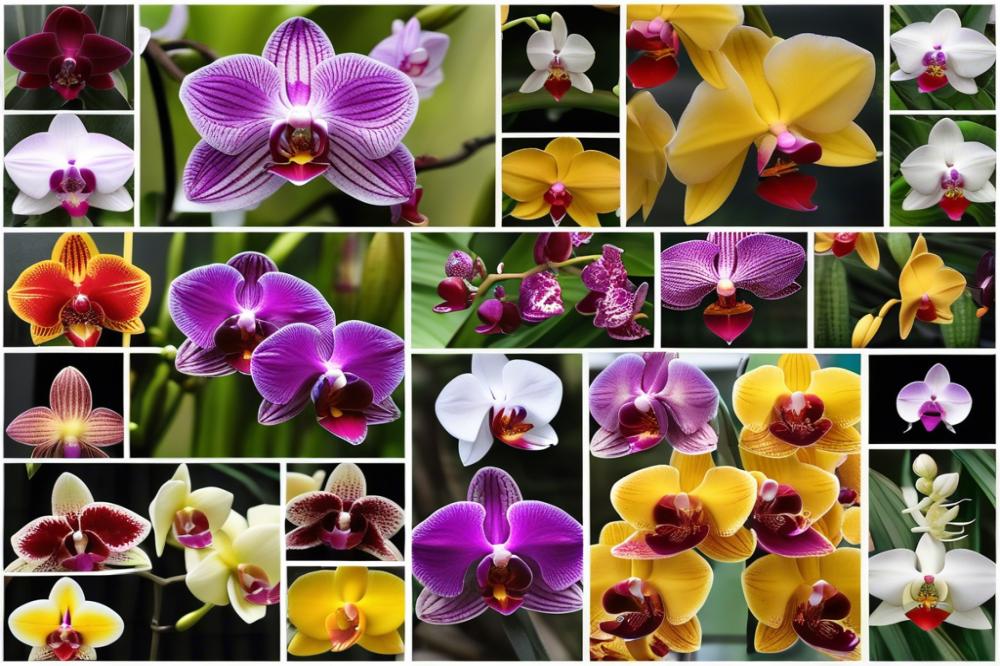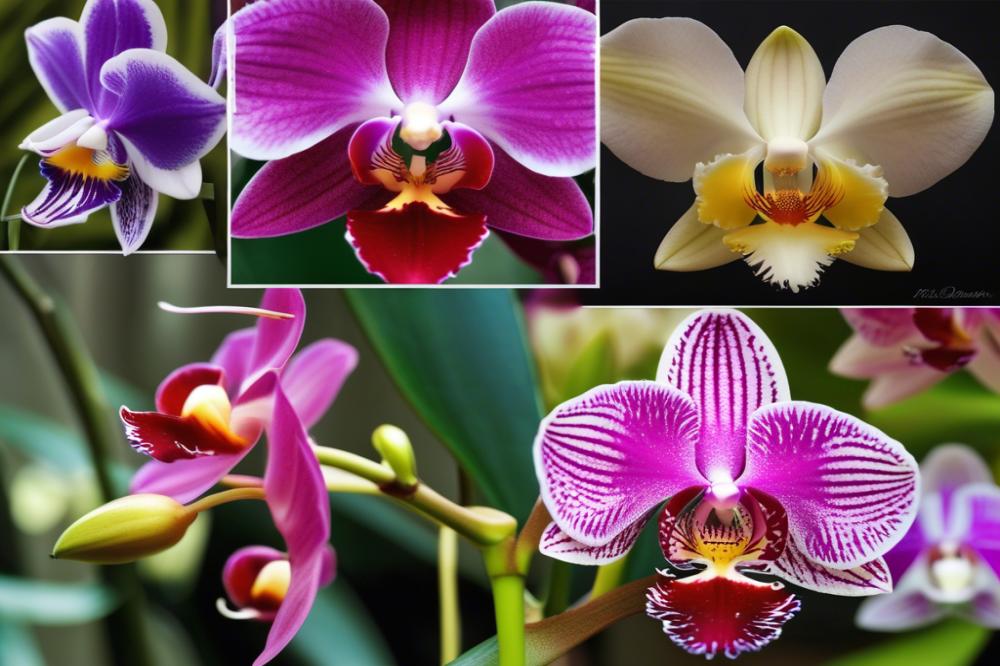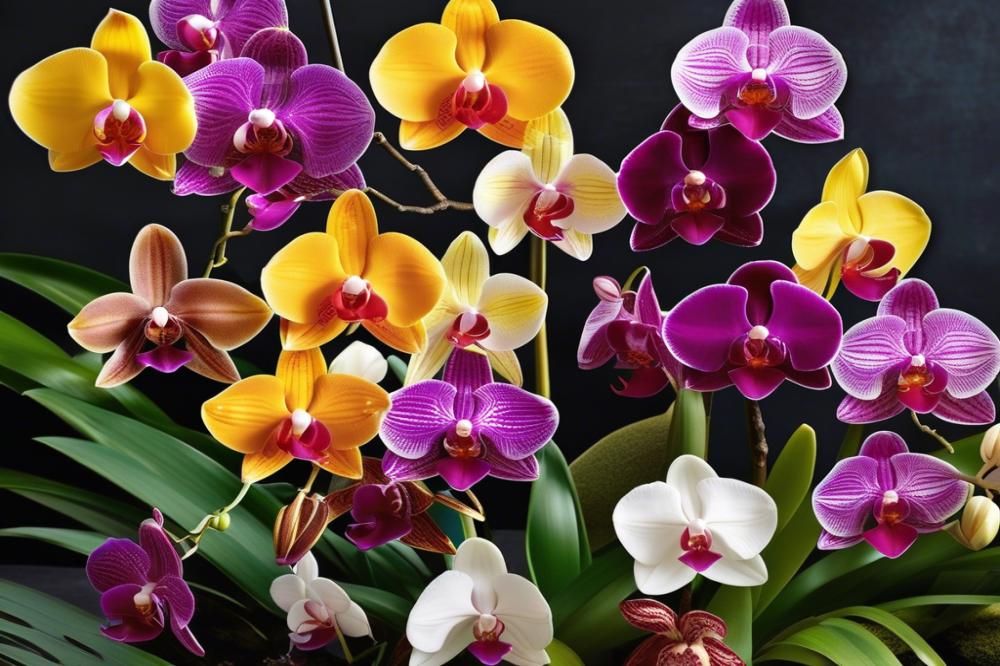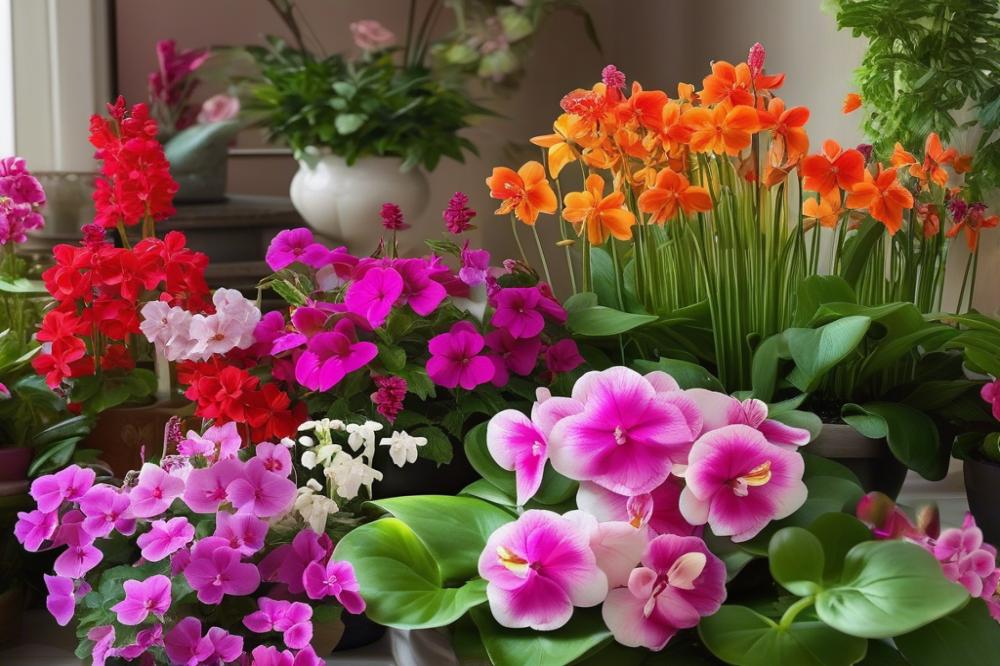Understanding the Significance of rare orchids
In the world of horticulture, rare orchids hold a special place of fascination. Collectors and enthusiasts alike seek out these stunning plants, which often showcase breathtaking colors and intricate shapes. The allure of these flowering plants extends beyond mere beauty; they also signify a connection to the diverse ecosystems they inhabit.
Orchid species display immense diversity. From the common garden varieties to the elusive and exotic orchid varieties found in remote locations, each type carries its own charm. This vast range captivates the hearts of collectors, who often wish to grow unique specimens in their own spaces. Identifying these flowers can become a thrilling adventure, as enthusiasts search for rare specimens both online and in botanical gardens.
Conservation efforts for rare flower species have gained momentum in recent years. Many organizations are dedicated to protecting delicate habitats and promoting sustainable practices. Some hybrid orchids can trace their lineage back to these exotic varieties, showcasing the importance of preserving their wild counterparts. As new threats, like climate change, emerge, the urgency of orchid conservation has never been more apparent. Protecting these plants means preserving a key element of biodiversity.
In summary, understanding the complexity of orchid care is vital for both casual growers and avid collectors. The quest for rare orchids is not merely about acquisition. It involves appreciation and responsibility. Each plant represents a piece of nature worth celebrating and protecting.
Understanding Orchid Types


Orchids are a fascinating group of flowering plants that come in numerous classifications. Their diversity is immense, with members spanning various shapes, colors, and sizes. Familiarizing yourself with orchid types can greatly enhance your orchid identification skills. You will find that they typically fall into two major categories: hybrid orchids and wild species.
Different Classifications of Orchids and Their Characteristics
Numerous unique types of orchids exist, making them appealing to collectors and enthusiasts alike. Some common types include Cattleyas, Phalaenopsis, and Dendrobiums. Each type has specific needs in terms of orchid care, as they thrive under different conditions. Cattleyas, for example, enjoy brighter light, while Phalaenopsis prefer filtered light. Understanding these characteristics is essential for any orchid enthusiast.
Overview of Common Orchid Habitats
Orchids grow in various environments, ranging from tropical rainforests to arid regions. Many wild species can be spotted in lush jungles, where humidity and shade are ample. Others thrive high in the mountains or near coastal areas. Botanical gardens often showcase a range of these plants, displaying their natural habitats beautifully. Exploring these venues can ignite a deeper passion for plant collecting.
Distinction Between Hybrid Orchids and Wild Species
Hybrid orchids are the result of crossing different species. These hybrids often exhibit striking colors and unique patterns not found in their wild counterparts. Wild species, on the other hand, maintain their natural beauty and habitat requirements. Both types have distinctive roles in orchid conservation efforts. Cultivating hybrids may lead to more resilient plants, while preserving wild varieties protects biodiversity.
Notable Rare Orchid Types and Their Unique Features
Some rare flower species are truly remarkable. The Ghost Orchid, known for its elusive beauty, captivates collectors with its mysterious allure. Likewise, the Rarest of them all, the Corpse Flower, blooms infrequently and emits a strong odor. Their unusual characteristics and limited distributions contribute to their intrigue. Encountering such rare orchids highlights the importance of conservation efforts. Protecting these plants ensures that future generations can appreciate their beauty as well.
orchid identification Techniques


Identifying orchids can be a rewarding challenge. Start by observing key characteristics of the plant. Leaf shape, size, and color can vary widely among different orchid types. Take notes on these details, as they can help you narrow down the possibilities.
Next, pay close attention to flower structure and color. The arrangement of petals and the unique shape of the blooms play an essential role in defining species. Some orchids may have intricate patterns or specific colors that are distinctive to rare flower species. For example, certain hybrid orchids might have vibrant hues that catch your eye.
Utilizing resources is crucial for proper orchid identification. Field guides offer valuable information about various orchid habitats and growing conditions. Botanical gardens are also excellent places to learn. These places often feature diverse collections and knowledgeable staff who can provide insights into orchid care and conservation.
Joining online tools and communities can enhance your learning experience. Numerous websites and forums allow for sharing pictures and asking questions about orchids. Engaging with other enthusiasts can lead to advice on plant collecting and caring for your orchids. You’ll find that many people are eager to share their knowledge about these captivating flowering plants.
Don’t shy away from broadening your understanding through diverse resources. By exploring different avenues for orchid identification, you increase your chances of finding rare orchids. Learning and interacting with others who share your passion will enrich your journey into the world of orchids.
Recognizing Rare and Exotic Varieties


Identifying rare orchid varieties involves understanding specific criteria. First, consider their rarity. Some orchids grow in restricted areas, making them harder to locate. Next, examine their unique characteristics. These traits can include unusual colors, unique shapes, or specific growing conditions. Orchids that require special environments are often considered rare flower species. Knowledge about these factors sets the foundation for effective orchid identification.
Specific Examples of Rare Orchids and Their Distribution
Several examples illustrate the diversity found in rare orchids. The Ghost Orchid (Dendrophylax lindenii) thrives in the swamps of Florida and Cuba. Its striking white blooms and elusive nature draw attention. Another example is the Blue Vanda (Vanda coerulea). This flower, native to Southeast Asia, captivates with its vibrant blue petals. Each of these orchid types showcases the beauty and uniqueness of these blooming plants.
Cultural Significance and Popularity Among Collectors
Orchids hold cultural significance in many parts of the world. In Asia, they represent love and beauty. Collectors often seek out these rare varieties for their gardens or displays. Their appeal lies in both aesthetics and their exotic charm. Enthusiasts engage in plant collecting, sharing experiences and knowledge about their prized specimens. The passion for unique orchids has created communities that celebrate and nurture this love.
The Role of Orchid Conservation Efforts and Habitat Protection
Conserving rare orchids is vital for maintaining biodiversity. Many unique species face threats from habitat loss and climate change. Organizations work tirelessly to protect these plants and their natural habitats. Orchid conservation strategies often include education and the promotion of botanical gardens. These venues serve as safe havens for endangered varieties. Additionally, they raise awareness about the importance of preserving our planet’s floral treasures. Protecting native orchid habitats promotes a healthier ecosystem for all flowering plants.
Orchid Care for Rare Varieties


Caring for exotic orchids can feel daunting, but it can also be very rewarding. Each species has essential requirements vital for its growth. For example, certain rare flower species thrive in humid environments. Providing the correct humidity level is crucial for these plants to flourish. A humidity level of around 50-80% is often ideal. This can be achieved by using humidity trays or misting the air. Exposing orchids to bright, indirect sunlight also plays a key role in their health. However, too much direct sunlight can scorch their leaves.
Common challenges come with cultivating such delicate beauties. Pests and diseases can quickly become a major issue. Infestations of spider mites, aphids, or mealybugs may attack your plants if left unchecked. Regular inspection of the foliage can prevent these problems from escalating. Additionally, recognizing the signs of overwatering is essential. Root rot often occurs when the plant sits in soggy soil. Establishing a proper watering schedule based on the needs of the specific orchid types can help mitigate this issue.
Best Practices for Maintaining Healthy Flowering Plants
Track your orchid’s growth to maintain vibrant flowers. Documenting its watering routine, light exposure, and feeding schedule can yield insights into what it requires. Fertilizing your flowering plants with the right nutrients encourages blooming. Specialized orchid fertilizers are available and typically contain a different ratio of nutrients compared to regular houseplant food. Following the recommended feeding schedule will help your orchid thrive.
The importance of tailored care cannot be overstated when dealing with various orchid habitats. Different species possess unique characteristics and needs. For example, some hybrid orchids prefer drier conditions than others. Knowing this helps collectors provide the specific care each variety demands. Botanical gardens can be excellent sources for learning about the diversity of orchid care. Visiting these gardens can also spark interest in orchid conservation efforts.
Engaging in plant collecting can deepen one’s appreciation for these beautiful species. Understanding their particular requirements will lead to success. The joy of nurturing a difficult orchid species should inspire enthusiasts. With patience and effort, it’s possible to witness breathtaking blooms.
The Role of Botanical Gardens and Conservation
Botanical Gardens and Orchid Conservation
Botanical gardens play a vital role in saving orchids from extinction. They protect many orchid habitats through careful cultivation. Visitors learn about various orchid types that thrive in different conditions. These gardens serve as living museums that showcase the beauty of unique flowers. Their collections often include endangered plant species, raising awareness about the need for conservation. By preserving these plants, botanical gardens maintain biodiversity and prevent the loss of rare flower species.
Programs for Breeding and Preserving Species
Many botanical gardens have dedicated programs focusing on breeding hybrid orchids. These initiatives often aim to create resilient varieties that can thrive in changing climates. Breeding programs also help to maintain genetic diversity among orchid populations. Staff work tirelessly to cultivate and propagate rare species. Such efforts ensure that these beautiful plants can be enjoyed by future generations. Protecting native species is just as important. They engage in research that informs the public about orchid care and habitat requirements.
The Importance of Education and Awareness
Education is key in fostering a community of orchid enthusiasts. Botanical gardens often host workshops to help visitors learn orchid identification skills. Knowing how to care for orchids is crucial for their survival. Awareness programs shine a light on the threats facing these delicate plants. Visitors are inspired to be responsible plant collectors. They leave with knowledge on how to support orchid conservation efforts. By sharing stories of incredible flowers, gardens ignite passion for these remarkable plants. It fosters a culture that appreciates the beauty of nature’s diversity.
Final Thoughts on Identifying and Cultivating Orchids
Recapping the key points can help solidify your understanding. Identifying rare flower species requires a good eye and some knowledge. Focusing on the specific characteristics, like color patterns and leaf shapes, can make a difference. Observe the environment in which these plants thrive; conditions often vary significantly based on the type. Learning about the climate and the habitat of your orchids plays a crucial role in their care.
Engaging in conservation efforts is essential as well. Taking part in initiatives that protect these species helps maintain biodiversity. You can join local orchid societies or participate in plant rescue programs. Sharing knowledge with others fosters a community that values preservation.
There is a genuine joy in growing and cultivating orchids. Once you find your niche, caring for them becomes a rewarding journey. The beauty of these plants can brighten your home and bring peace to your life. Embrace the challenge of orchid identification and let your passion flourish. Each new variety you grow adds a unique touch to your collection. Encourage others to explore the wonderful world of orchids. Happy growing!



